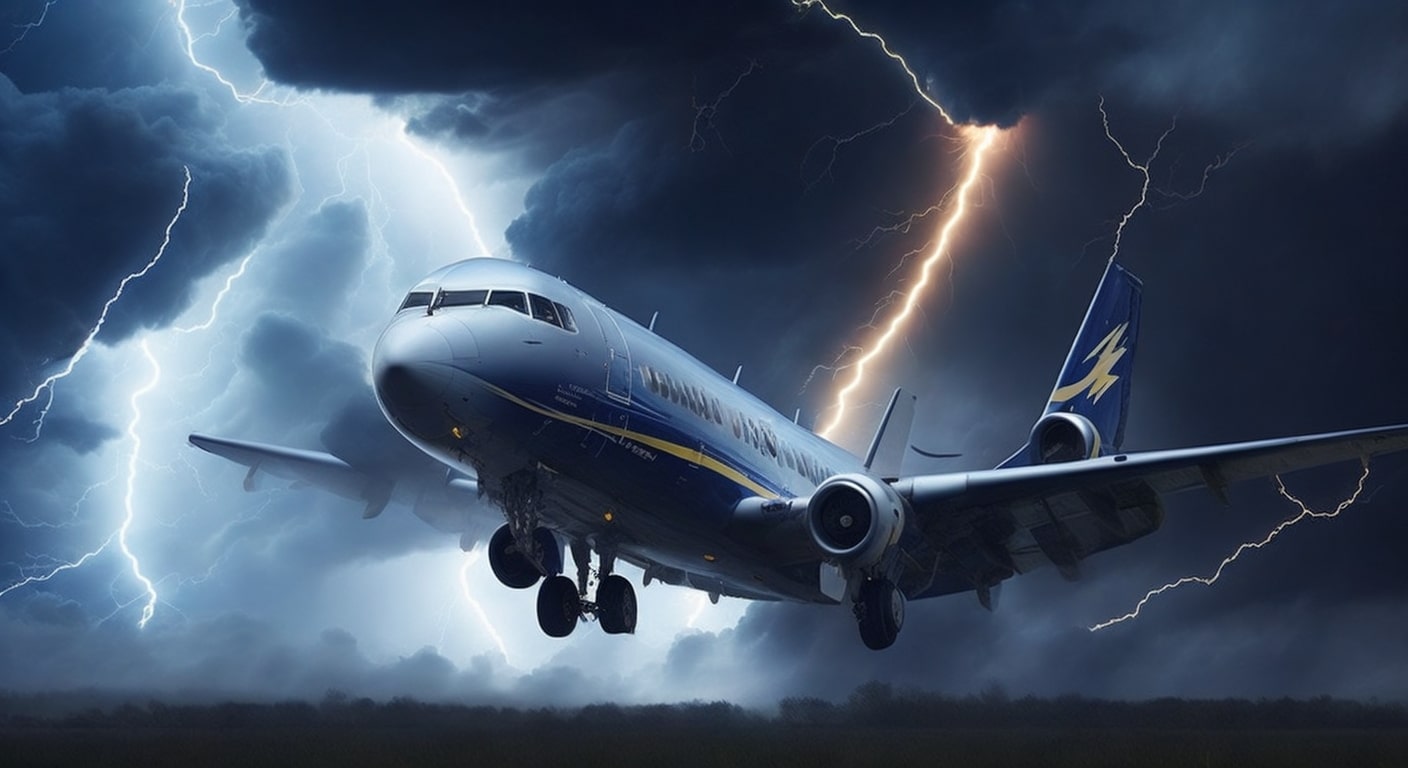
Thunderstorms are by no means a rare natural phenomenon; news about lightning hitting airplanes around the world regularly appears in the news headlines. Let's find out how dangerous lightning is to modern airplanes.
Do lightning strikes planes often?
Yes. On average, there is one lightning strike per year for each commercial airplane. Pilots encounter lightning once in three thousand hours of flight time - that is, only once every few years in commercial aviation. Passengers tend to spend less time in the sky than pilots, which means their chance of getting into such a situation is even lower.
When does lightning strike most often?
During takeoff or landing. Most cases occur while the plane is climbing or descending - 96% of lightning strikes occur inside a thundercloud.
Lightning also strikes when the plane is not in the center of a thunderstorm, but flies past it. Lightning can also strike in the middle of a clear sky - for example, when an airplane flies near puffy clouds left over from a past thunderstorm front.
Pilots trying to dodge lightning?
Yes. Lightning strikes on planes would happen much more often, but pilots usually bypass thunderclouds, which can be seen on a special weather radar - which any commercial airliner and private jet with more than nine seats is required to have.
Bypassing thunderstorms, pilots are not primarily concerned about lightning, but about severe or extreme turbulence that can cause an aircraft to lose control and even collapse in midair. By rule, pilots must chart a plane's course no closer than 20 nautical miles (37 kilometers) from the center of a thunderstorm, which shows up red on their radar; sometimes planes have to deviate from the route by dozens of kilometers. This is usually enough to avoid severe turbulence.
How dangerous is lightning to passengers and the plane?
Almost no danger. Passengers are reliably protected because the airplane is an almost perfect Faraday cage made of well-conducting aluminum. Electrocution due to lightning on board an airplane is extremely rare. In 2001, for example, the co-pilot of a British Airways airliner was hit by lightning; the commander who was sitting next to him was unharmed and landed the plane himself. The injured pilot soon returned to flying.
The degree of damage to an airplane depends on where the lightning struck and "flew" from, as well as its energy. Generally, lightning "enters" and "exits" around the nose of the aircraft, the front of the engines, the wing tips and the horizontal stabilizer. Usually, the "exit" and "entry" places look like small (about or a little over a centimeter in diameter) non-crossed melted holes (although there are more serious cases).
After a lightning strike, pilots check all systems for proper operation; if a problem is found, they land the plane at the nearest airport. Even if the systems work properly, a plane struck by lightning must be thoroughly inspected by technicians after landing; the resulting delays cost airlines millions of dollars.
Modern airplanes are not only made of aluminum. Are they worse protected?
No. When composite materials began to be used, lightning studies were conducted in which test planes were purposely flown into thunderstorms. To protect against lightning, an electrically conductive coating is applied to the outer skin of the aircraft and the supporting structures. This ensures that modern airplanes remain an almost perfect Faraday cage.
Does lightning often cause plane crashes?
Very rare. Since 2000, there have been more than three thousand accidents involving all types of aircraft, only eight of which were lightning-related in one way or another.
Lightning catastrophes were common in the early days of aviation, when airplanes were not all-metal. In 1963, the newest airliner at the time, the Boeing 707, exploded in the air in the United States; lightning caused the detonation of fuel vapors in its tanks. Since then the design of all airliners has changed: first, everything has been done so that lightning could not penetrate behind the plating and cause detonation; second, airplanes have been massively fitted with a kind of lightning rods.
Can you see from the cabin how lightning strikes the plane?
It depends on the power of the charge and where it "enters". Usually passengers see nothing at all or notice a bright flash on the wing. But there are more frightening strikes that are accompanied by bright flashes and loud pops. From the ground, a lightning strike on an airplane looks much scarier.